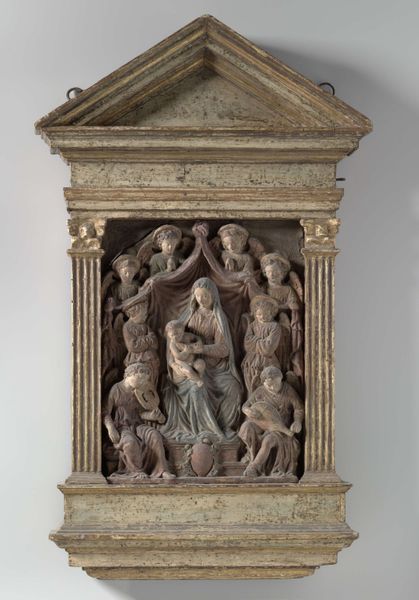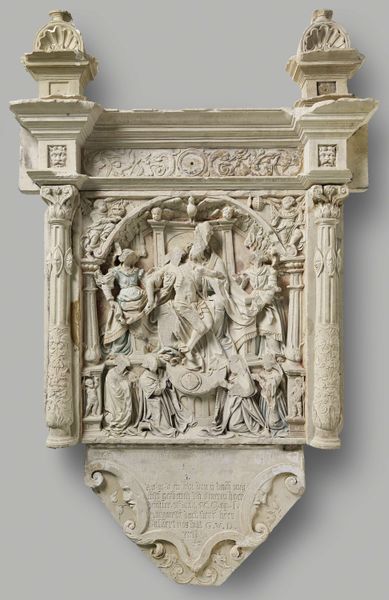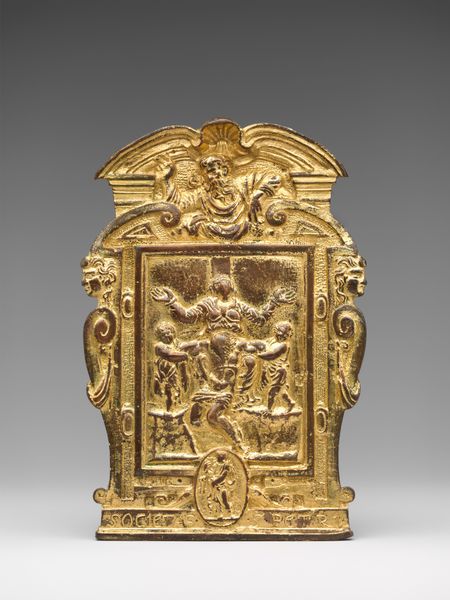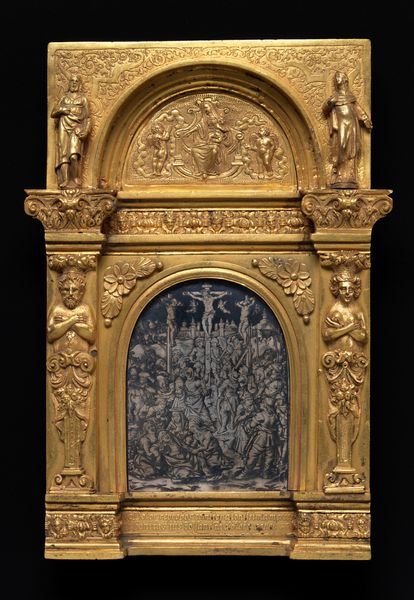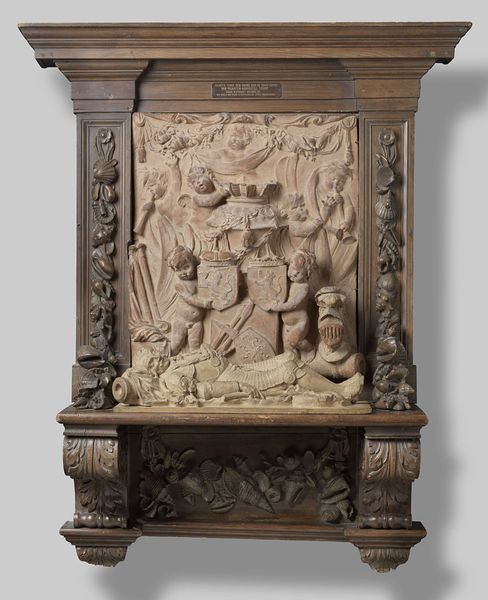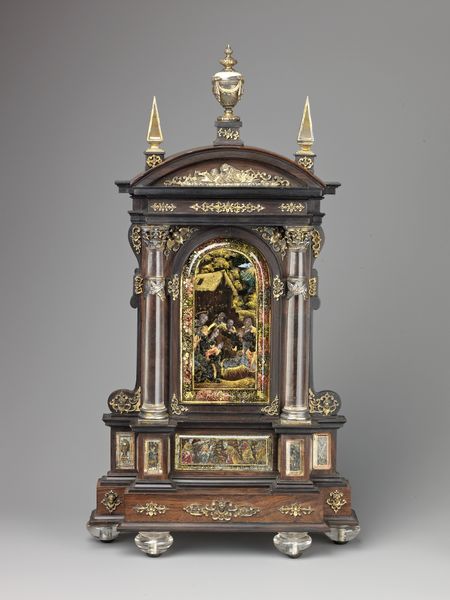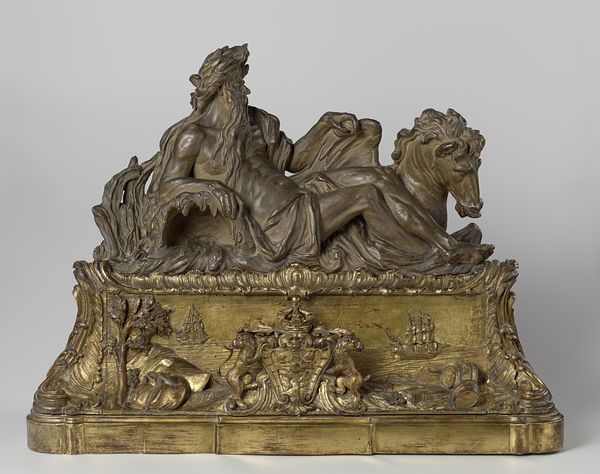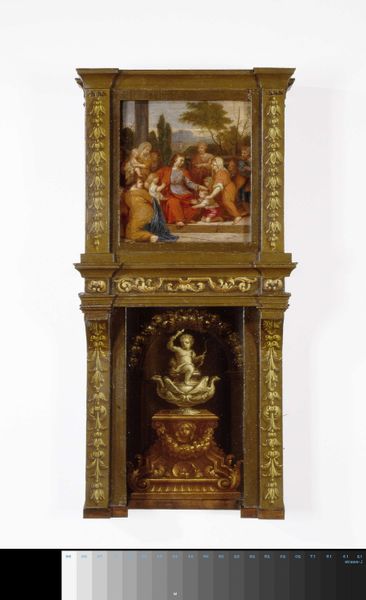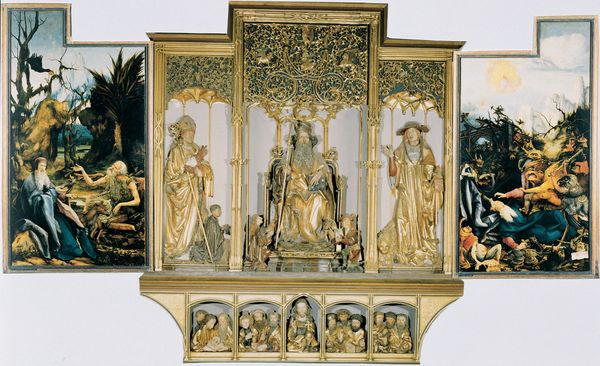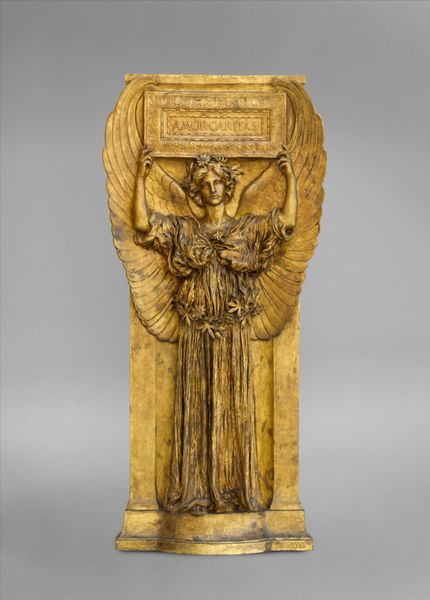
Pax with the Risen Christ Appearing to the Apostles 1566 - 1577
0:00
0:00
bronze, sculpture
#
sculpture
#
bronze
#
mannerism
#
figuration
#
sculpture
#
history-painting
#
decorative-art
#
christ
Dimensions: Overall: 5 7/16 x 3 11/16 (at base) x 2 in. (13.8 x 9.4 x 5.1 cm)
Copyright: Public Domain
Editor: This gilded bronze sculpture, "Pax with the Risen Christ Appearing to the Apostles" by Guglielmo della Porta, dating from around 1566-1577, has a solemn, almost theatrical quality. All of the figures seem poised, as though they’re performing for us. What historical context can you bring to it? Curator: Think about the counter-reformation. The Catholic church was looking for ways to reaffirm its authority in the face of the Protestant Reformation. Art became a crucial tool, shifting away from the restrained classicism of the High Renaissance towards the more emotionally charged style we call Mannerism. Editor: Mannerism…the posing, the drama, the gold. Curator: Exactly! But it’s not just about style. Consider the sculpture’s function: a pax. People would kiss it as part of the Mass. What kind of message does presenting this very specific image–Christ's resurrection—send in this devotional object? How might the apostles respond to a newly risen Christ, with all the visual cues of heavenly ascension, like that architectural framework? Editor: I suppose it’s asserting the Church’s role as intermediary, confirming the miracle through carefully controlled representation. But it also places emphasis on spectacle as something tied to the power of God, right? Is the medium, with all its golden richness, part of that political and social assertion? Curator: Absolutely! It’s about reinforcing the church's power and visual vocabulary but what did this power mean in 16th-century society, what were the challenges it posed? And to whom? Can we really look at this scene of triumph, now, and take it at face value, given the centuries of violence that accompanied it? Editor: So, beyond the aesthetic, it’s really about unpacking that power dynamic inherent in religious and artistic authority. It makes you consider its implications, even today. Curator: Precisely. Seeing art through this lens opens conversations about agency, interpretation, and the ever-evolving relationship between art and society.
Comments
No comments
Be the first to comment and join the conversation on the ultimate creative platform.

